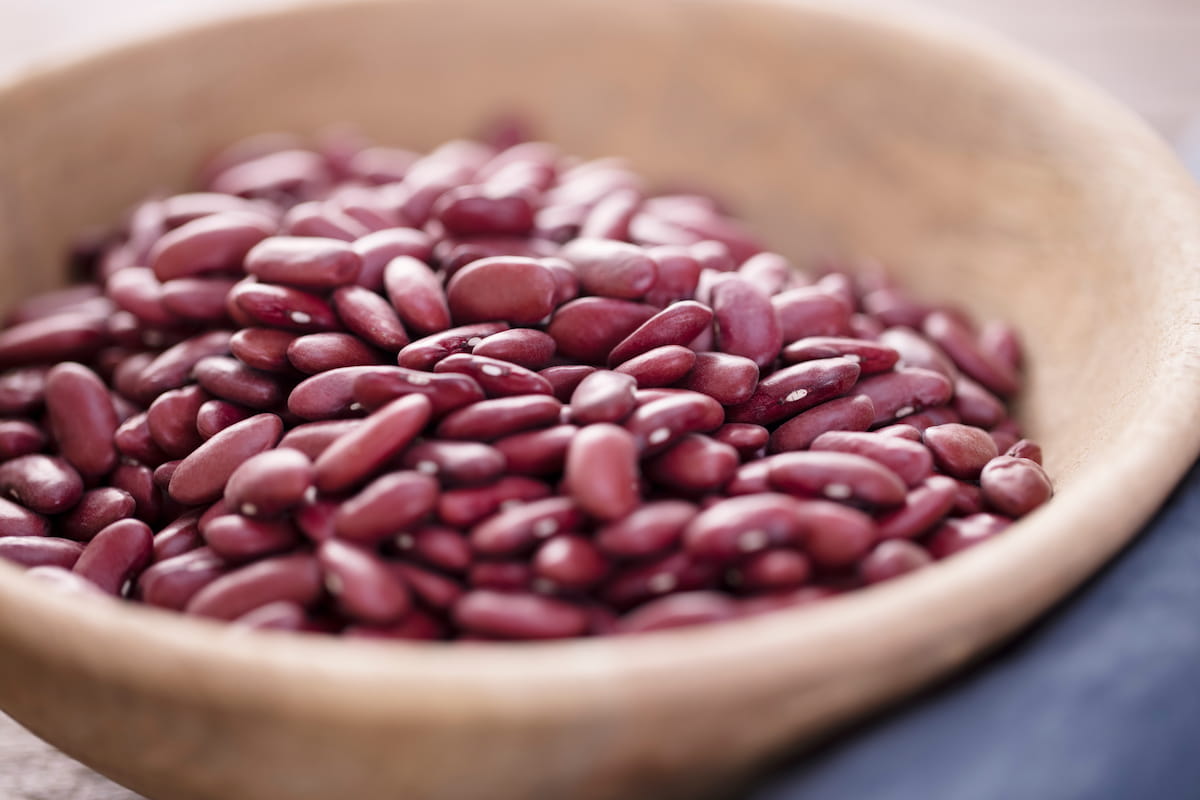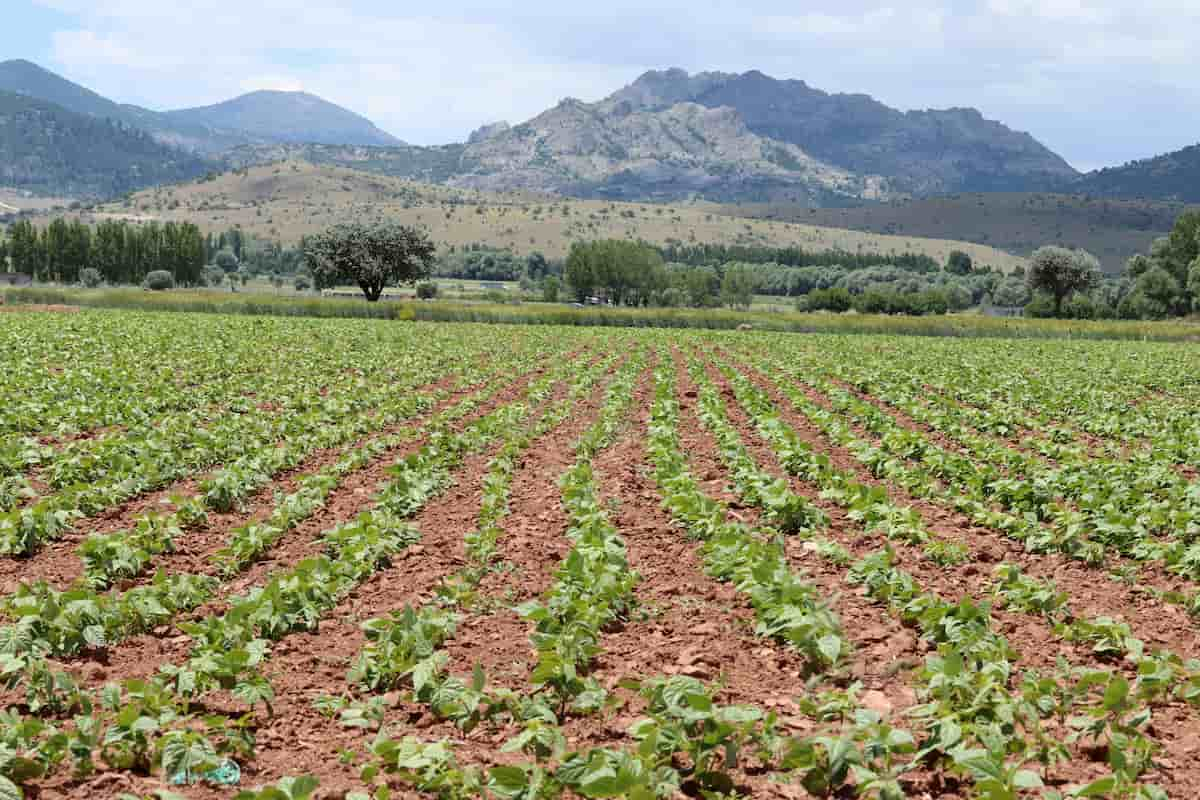Kidney beans are also called chili beans due to their dark red color and kidney-like shape. They provide protein and are rich in molybdenum and cholesterol-lowering fiber. Rajma, a dish from North Indian cuisine, is made from red kidney beans. Major kidney bean-producing states in India include Maharashtra, Jammu, and Kashmir. Being fiber-rich, kidney beans can help prevent a rapid increase in blood sugar levels, making them a beneficial option for individuals with diabetes, hypoglycemia, or insulin resistance.

Rajma/Kidney Beans Production
Best Package and Practices of Rajma High Production
high production of Rajma, it is important to use high-quality seeds, follow proper planting practices, maintain soil fertility, ensure adequate irrigation and drainage, control pests and diseases, and harvest at the right time. Post-harvest management, such as drying, cleaning, and proper storage, is also crucial to maintain the quality of the beans. Adopting sustainable agriculture practices and using modern technologies.
Land/ Field Preparation and Soil Requirements for Rajma
Kidney beans can thrive in various soil types, from light sandy to heavy clay, but well-drained loamy soil is ideal for cultivation. Saline soils should be avoided as they can negatively affect growth. The optimal pH range for kidney beans is 5.5 to 6. The soil should be prepared by giving two to three ploughings to bring it to a fine tilth, and the field should be leveled to avoid water stagnation.
Temperature, Climatic, and Rainfall Requirements for Rajma
The ideal soil temperature range for kidney beans is between 22°C to 28°C, while temperatures below 15°C should be avoided. It requires a moderate rainfall of 60-150mm and is best sown during the season when the temperature ranges between 22°C to 25°C. Harvesting can occur during the season when the temperature ranges between 28°C to 30°C. Proper temperature management is crucial for a good yield of kidney beans.
Propagation Method and Seed Quality for Rajma
Rajma can be propagated through seeds. The seeds should be of good quality, obtained from healthy and disease-free plants. Farmers should select the right seeds suitable for their region and growing conditions. The seeds should be treated with fungicide before sowing to prevent seed-borne diseases.
Seed Treatment for Rajma
To prepare Rajma seeds for sowing, treating them with Thiram at a rate of 4 grams per kg of seeds to protect against seed-borne diseases is recommended. Additionally, applying biofertilizer at a rate of 200 grams for every 30 kg of seeds with 30 ml of water or boiled rice starch (cooled) can help enhance plant growth. The seeds should be dried in the shade for 30 to 45 minutes before sowing.
Seed Rate and Spacing for Rajma
For early sown varieties, a seed rate of 30-35kg/acre is recommended, while for pole-type varieties, a distance of 1m in a hill with 3-4 plants per hill and a seed rate of 10-12kg/acre is ideal. Row-to-row spacing should be maintained at 30 cm, while plant-to-plant spacing should be between 10 cm to 15 cm for optimum growth. Seeds should be sown at a depth of 6 cm to 7 cm to ensure proper moisture absorption in the soil.
Sowing Method for Rajma
The dibbling method is commonly used for sowing Rajma seeds. In plain areas, seeds can be sown in lines or on beds, while in hilly areas, seeds are sown on ridges to adapt to the terrain.
In case you missed it: Oats Production Guide: A Step-By-Step Cultivation Practices

Crop Rotation and Intercropping in Rajma
Crop rotation with leguminous crops like peas, lentils, or soybean can help fix Nitrogen in the soil and improve soil fertility. Intercropping with maize, soybean, or cucumber can help maximize land use and provide additional income. Additionally, intercropping with aromatic plants like coriander or fennel can help repel pests and improve soil quality. Proper crop rotation and intercropping can help maintain a sustainable and productive Rajma farming system.
Manure & Fertilizer Applications in Rajma
To meet the nutrient requirements of kidney bean crops, it is recommended to apply 40 kg/acre of Nitrogen and 25 kg/acre of Phosphorus in the form of Urea (at a rate of 87 kg/acre) and SSP (at a rate of 150 kg/acre). The Muriate of Potash should be applied based on soil test results.
Weed Management and Herbicide Application in Rajma
To control weeds in kidney bean farming, it is recommended to hand-pick weeds from the farm after one month of sowing seeds. Additionally, as a pre-plantation process, pendimethalin or fluchloralin is advised at 1 kg per hectare to prevent weed growth and improve plant growth.
Water Management in Rajma
it is recommended to provide pre-sowing irrigation. In total, 6-7 irrigations are required during the growing season, with irrigation on the 25th day after sowing and three at 25-day intervals necessary to obtain optimal yields. Irrigation before blooming, during flowering, and at the pod development stage is necessary to prevent water stress, which can lead to yield loss. Proper irrigation management is critical for successful Rajma cultivation.
Disease Control in Rajma
- Avoid waterlogging and maintain a clean field.
- For control, spray Hexaconazole with a sticker at 1ml/Ltr of water.
- For mild infestations, spray water-soluble Sulphur at 20gm/10Ltr of water with an interval of 10 days.
Yellow Mosaic virus causes light and green patches on leaves, leading to stunted growth and yellowing of leaves and fruits. To prevent it, select healthy and disease-free seeds and destroy infected plants. To control it, spray Acephate 75SP at 600gm/200Ltr or Methyl demeton 25EC at 2ml/Ltr of water.
Pest Control in Rajma
Thrips are a common pest in dry weather that suck sap from foliage and cause leaves and flowers to drop curling. Blue sticky traps can be placed in the field to check their severity, and Verticillium decani can be sprayed at 5gm/Ltr water. Imidacloprid 17.8SL, Fipronil, or Acephate, 75% WP, can be sprayed for heavy infestations.
Aphids suck sap from leaves and excrete a honey-like substance, leading to blackish fungus development. Acephate 75SP or Methyl demeton 25EC can be sprayed to control them. Yellow mites feed on the lower surface of leaves and cause a cup-shaped appearance and defoliation. Chlorfenapyr or Abamectin can be sprayed, and Spiromesifen 22.9SC can be used for effective control.
In case you missed it: Rye Production Guide: A Step-By-Step Cultivation Practices

Harvesting and Threshing of Rajma
Harvest Rajma when pods are fully grown and turn yellow, and most leaves have dropped. Depending on the variety, pods are ready for harvest 7-12 days after flowering, and the overall crop is ready to harvest in 120-130 days. Harvest at the right time to avoid shattering. After harvest, dry the plants for 3-4 days in the sun, then thresh them with the help of bullocks or sticks. For post-harvest, sort and remove damaged beans before storage. Store beans in a cool, dark, and dry place to prevent deterioration due to heat and humidity
Rajma Yield per Acre
The average kidney beans yield per acre in farming is 3.50 to 4 quintals.
Conclusion
Rajma (Kidney Beans) is a profitable crop with increasing demand in the market. Farmers can achieve high yields and quality produce by following the proper cultivation practices. Adequate irrigation, timely pest and disease management, and careful post-harvest handling are crucial for a successful harvest and storage.
- Ultimate Guide to Ossabaw Island Hog: Breeding, Raising, Diet, and Care
- Ultimate Guide to Juliana Pig: Raising Facts, Size, Diet, Care, and Lifespan
- Raising Lleyn Sheep: Disadvantages, Price, Uses, Characteristics, and Care
- Ultimate Guide to Meishan Pig: Breed Facts, Breeding, Raising, and Care
- Ultimate Guide to Teacup Pigs: Raising, Diet, Lifespan, Cost, and Care
- Guide to Raising Poll Dorset Sheep: Facts, Profile, Characteristics, Uses, and Care
- Ultimate Guide to Bighorn Sheep: Characteristics, Diet, Lifespan, Breeding, and Lifecycle
- Ultimate Guide to Raising Katahdin Sheep: Farming Facts, Breed Profile, Uses, and Care
- Ultimate Guide to Raising Oreo Cows: Belted Galloways Farming Facts, Profile, Uses, and Care